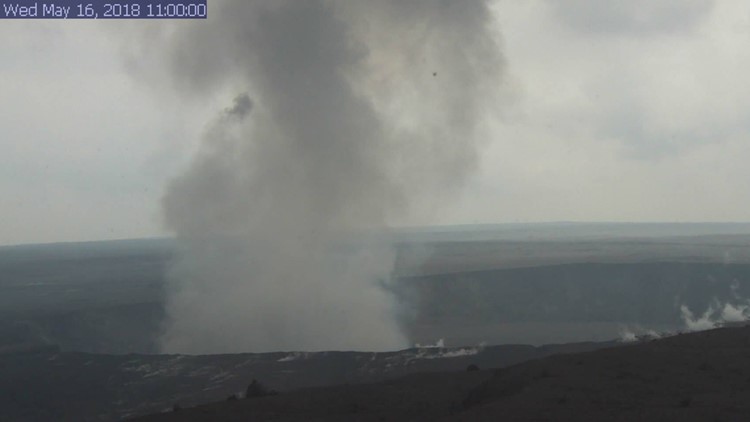PAHOA, Hawaii — 2:30 p.m.
The Hawaiian Volcano Observatory has found dense, large rocks roughly two feet in diameter (60 centimeters) in a parking lot a few hundred yards (meters) away from Kilauea's summit crater. This indicates a stronger explosion occurred Tuesday evening, spewing the rocks out of the summit.
U.S. Geological Survey scientists say larger rocks were expelled during similar, stronger explosions that occurred in 1924. They expect similar and possibly stronger explosions to occur from the summit crater.
The Hawaii Police Department says cracks have formed on a highway near the entrance to Hawaii Volcanoes National Park. Much of the park remains closed.
"We're all safe, and I wish they'd open the park back up, but they have to keep it safe for everybody," said Ken McGilvray, an area resident. "We live on a volcano!"
___
12:25 p.m.
Hawaii Gov. David Ige says the state is forming a joint task force that could handle mass evacuations of the Big Island's Puna district if lava from Kilauea volcano covers major roads and isolates the area.
Hawaii National Guard Brig. Gen. Kenneth Hara will have the authority to command both National Guard and active duty military forces in the task force.
The troops may be needed for emergency evacuations, search and rescue, clearing debris and other duties.
Ige says he received approval for the task force from U.S. Defense Secretary James Mattis on Wednesday.
Earthquakes continue to shake the Big Island, with the most severe at around 8:30 a.m. producing a 4.4 magnitude quake. A 4.0 quake hit at 11:36 a.m. There was no tsunami alert.
___
11:30 a.m.
Officials in Hawaii say volcanic emissions from the summit at Kilauea volcano on the Big Island have decreased, prompting the cancellation of an ash fall advisory.
The Hawaiian Volcano Observatory says there are occasional bursts of ash coming from the crater. The burst causes the ash to fall downwind to several communities, but there are only trace amounts.
Earthquakes continue to shake the Big Island, with the most severe at around 8:30 a.m. producing a 4.4 magnitude quake. The Pacific Tsunami Warning Center says there is no tsunami alert at this time.
Scientists say earthquakes may shake loose rocks underground and open up new tunnels for lava to flow.
___
8 a.m.
A geophysicist says a plume that's rising from the Kilauea volcano summit on Hawaii's Big Island does not contain as much ash as it did on Tuesday.
Mike Poland with the U.S. Geological Survey said Wednesday the plume seems to be made largely of rock dust.
Because there's little wind, the plume for the most part is rising vertically over the summit.
USGS scientists will not monitor the plume from a summit observatory because of fears of falling ash.
Instead, they will operate from a backup command center at the University of Hawaii at Hilo.
Warnings to pilots are still in place because of the plume that reached 12,000 feet (3,658 meters) Tuesday.
The volcano has been spewing lava from fissures that opened up on its flanks for two weeks.



